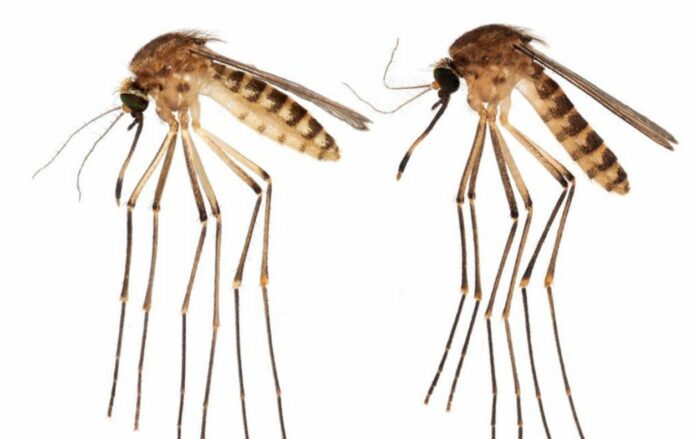As Florida battles against mosquito-borne diseases, the fight has intensified with the emergence of a new mosquito species known as Culex lactator.
The discovery of a new mosquito species called Culex lactator in Florida has raised concerns among experts, who fear it may exacerbate existing health issues.
A new study published in the Journal of Medical Entomology reveals the arrival of a new mosquito species in Florida. Culex lactator, a mosquito species previously found only in the tropics, has now taken up residence in at least three counties in Florida.
The rapid influx of new mosquito species in the region is a cause for concern for scientists due to the potential for them to transmit mosquito-borne diseases. The study was conducted by researchers from the UF/IFAS Florida Medical Entomology Laboratory (UF/IFAS FMEL).
UF/IFAS researchers first discovered the Culex lactator mosquito species in Miami-Dade County in 2018 while searching for other non-native mosquitoes. Since then, the species has established thriving populations in at least three counties, including Miami-Dade, Collier, and Lee. Experts are concerned about the potential disease risk posed by this new mosquito species, as there hasn’t been enough research conducted on it.
According to Lawrence Reeves, lead author of the study and an assistant professor and mosquito biologist at the UF/IFAS research center in Vero Beach, there are currently about 90 mosquito species in Florida, with the list constantly growing as new species are introduced from other parts of the world.
Mosquitoes are widely studied because of their ability to transmit diseases. However, there are still significant gaps in our understanding of these insects, according to the author.
“That’s particularly true for species from the tropical forests, where mosquitoes are diverse and understudied,” he adds. “Introductions of new mosquito species like this are concerning because many of our greatest mosquito-related challenges are the result of nonnative mosquitoes, and in a case like this, it’s difficult to anticipate what to expect when we know so little about a mosquito species.”
The global population of mosquitoes includes over 3,600 different species, which means that a new mosquito species found in Florida could belong to any of these types. Through the use of DNA analysis and other techniques, Lawrence Reeves and his team confirmed that the new species found in Florida is Culex lactator.
Culex lactator is part of the Culex group of mosquitoes and is typically found in Central America and northern South America. While other species in this group are known to transmit viruses such as West Nile and St. Louis encephalitis, it is currently unclear whether Culex lactator will contribute to the transmission of these viruses in Florida.
Florida is no stranger to mosquito-borne illnesses, including West Nile virus, eastern equine encephalitis virus, dengue virus, chikungunya virus, and more, which pose significant health risks each year.
“It’s too early to know whether Culex lactator will exacerbate these challenges, but the implications are often difficult to predict because not all mosquito species are equally capable of transmitting a particular virus or other pathogen,” remarks Reeves.
According to him, each virus transmitted through mosquitoes is specific to certain mosquito species.
“We need to be vigilant for introductions of new mosquito species because each introduction comes with the possibility that the introduced species will facilitate the transmission of a mosquito-transmitted disease.”
The UF/IFAS faculty discovered the first specimens of Culex lactator in 2018 in southern Miami-Dade County. Subsequently, additional adult and immature specimens were collected from the same rural sites until 2022. These mosquitoes were collected from traps that were set up by Nathan Burkett-Cadena, Kristin Sloyer, and Lawrence Reeves while searching for other newly introduced mosquitoes. In 2022, the Collier Mosquito Control District and Lee County Mosquito Control District found Culex lactator in their counties, indicating that the mosquito has likely spread from its original point of introduction. Culex lactator is currently known to live in Miami-Dade, Collier, and Lee counties, but there is a possibility that it has spread to other areas of Florida, according to Reeves.
“Culex lactator is physically similar to mosquito species already known from Florida. It looks like other more common mosquito species,” adds Reeves. “Because of that similarity, the presence of Culex lactator in an area can be easy to miss.”
Reeves and his team emphasize the importance of ongoing monitoring for Culex lactator, as it is expected to spread to other suitable areas within the state.
Florida’s location near the tropics, combined with favorable climate conditions, makes it a prime destination for non-native mosquito species. Scientists are concerned about the increasing frequency of new species being established in Florida. Currently, as many as 17 non-native mosquito species have been identified in the state. According to Reeves, the detections of these non-native mosquito species are becoming more frequent, with 11 of the 17 species reported only in the past two decades, and six of them detected in just the last five years.
Like Culex lactator, the mosquitoes Aedes aegypti, Aedes albopictus, and Culex quinquefasciatus are nonnative species introduced from the tropics and are among the most significant disease vectors in the United States.
“Climate change may improve the chances of tropical mosquito species becoming established once they make it to Florida if the state becomes warmer,” according to Reeves. “Increasing storm frequency and intensity could also blow in more mosquitoes and other species from the Caribbean, Central America and elsewhere.”
Image Credit: UF/IFAS
